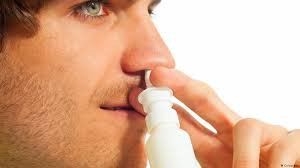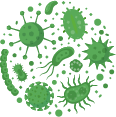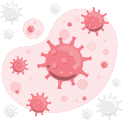Definition
Acute sinusitis is characterized by inflammation of the sinuses lasting less than one month. The sinuses, which are hollow spaces located behind the eyes, cheekbones, and forehead, are involved. This condition is also called rhinosinusitis due to the concurrent inflammation of the nasal tissues and the sinuses.
The sinuses comprise several pairs, each interconnected by narrow channels. Their primary functions include producing mucus to maintain nasal moisture, cleansing the nose, and protecting it from dust, allergens, and pollutants. The sinus cavities are typically filled with air, but they can become obstructed with fluid and inflamed due to irritation, leading to infection.
When the sinuses are inflamed, their ability to drain mucus is impaired. Acute sinusitis frequently results from a cold caused by viral infection, although non-infectious factors can also induce sinusitis. The American Academy of Otolaryngology notes that acute sinusitis is prevalent, affecting approximately one in eight adults annually.
Sinusitis is categorized by duration into the following types:
- Acute sinusitis lasts 2 to 4 weeks
- Subacute sinusitis lasts 4 to 12 weeks
- Chronic sinusitis lasts 12 weeks or more
- Recurrent sinusitis occurs multiple times a year
Causes
In acute sinusitis, mucus accumulation in the sinus cavity is due to blockage, creating an environment conducive to microbial growth and subsequent infection, which leads to sinusitis. Conditions contributing to sinus blockage include:
- Flu
- Allergic rhinitis, which involves swelling of the nasal lining due to allergies
- Nasal polyps, which are small tissue growths in the nasal lining
- Deviated nasal septum, which is a shift in the bone structure separating the nostrils
- Infections caused by bacteria, fungi, or viruses
- Infected adenoids
- Cystic fibrosis a genetic disorder resulting in thick, sticky mucus buildup in the body
- Dental infections can cause acute sinusitis and in rare cases, spread to the sinuses.
Risk factor
Several factors that can elevate the risk of acute sinusitis, including:
- A history of allergic conditions, such as allergic rhinitis or other sinus-affecting allergies
- Having a cold or flu
- Nasal passage deformities, such as a deviated septum, nasal polyps, or tumors
- Certain diseases like cystic fibrosis or immune system disorders, including HIV/AIDS
- Exposure to cigarette smoke, either directly or secondhand
- Spending significant time in environments prone to germs, such as daycare centers and kindergartens
- Engaging in activities that cause ear pressure changes, such as flying and scuba diving
Symptoms
Symptoms indicative of acute sinusitis may include:
- Thick, yellow or green mucus discharge from the nose (runny nose) or flowing into the throat (postnasal drip)
- Nasal congestion leading to difficulty breathing through the nose
- Pain, swelling, and pressure in the ears, as well as around the eyes, cheeks, nose, or forehead, which intensifies when bending over
- Headache
- Toothache
- Altered sense of smell and taste
- Cough
- Halitosis (bad breath)
- Fatigue
- Fever
Diagnosis
To diagnose acute sinusitis, a doctor begins by interviewing the patient to assess symptoms and inquire about medical history, including allergies and previous sinusitis episodes. Then, a physical examination follows.
During the physical examination, the doctor will inspect the ears, nose, and throat for blockages and swelling. They will also gently press on the sinuses to detect signs of infection. The doctor will examine the nasal cavity using a light source for inflammation, polyps, tumors, or other abnormalities.
Diagnosis is typically established based on the medical interview and physical examination results. However, additional diagnostic tests may be employed to confirm acute sinusitis and exclude other conditions:
Nasal endoscopy
An endoscope, a thin, flexible tube with a camera and light at the tip, is inserted through the nose to examine the sinuses' interior visually.
CT scan
Provides a detailed image of the sinuses and nasal area. While not usually recommended for uncomplicated acute sinusitis, it can help identify abnormalities or complications.
Nasal and sinus tissue culture
A tissue sample (culture) from the nose or sinuses is not generally required to diagnose acute sinusitis, but if the condition does not respond to treatment or worsens, a bacterial infection can help identify the cause.
Allergy test
A skin prick test may be recommended if an allergy is suspected of triggering acute sinusitis. This test is safe, and quick, and can identify the allergen causing the sinus inflammation.
Management
Acute sinusitis is typically short-lived and not severe, often resolving within 7 to 10 days without special treatment.
Antibiotics are only effective for bacterial infections, whereas sinusitis is usually viral or allergy-induced and, therefore, not treatable with antibiotics. Physicians may prescribe nasal steroid sprays or antihistamines to reduce inflammation and decongestants to alleviate nasal congestion. Pain relievers can also be prescribed to manage discomfort.
Additionally, physicians may recommend nasal irrigation using a saline solution to clear the nasal passages. This saline solution, composed of salt and sterile water, can be used for over five days. Adequate rest and hydration are also advised to support recovery.
Complications
Although rare, acute sinusitis can lead to complications, including:
- Chronic sinusitis. Acute sinusitis can recur and persist for more than 12 weeks.
- Meningitis is inflammation of the membranes and fluid surrounding the brain and spinal cord.
- Rarely, the infection can spread to the bones (osteomyelitis) or skin (cellulitis) and cause new infections.
- Vision issues. If the infection spreads to the eye socket, it can lead to decreased vision or permanent blindness.
Prevention
To prevent acute sinusitis, consider the following steps:
- Maintain a healthy diet to strengthen the immune system.
- Avoid exposure to cigarette smoke and other pollutants.
- Limit contact with individuals who have acute respiratory infections or sinusitis.
- Wash hands frequently, especially before meals.
- Use a humidifier in dry weather to keep the air and sinuses moist.
- Get vaccinated against influenza.
- Manage any existing allergies.
When to see a doctor?
While acute sinusitis generally resolves on its own, medical consultation is recommended if:
- Symptoms persist for more than a week.
- Symptoms worsen after initial improvement.
- Fever continues unabated.
- There is a history of recurrent or chronic sinusitis.
- dr. Yuliana Inosensia
Acute Sinusitis. (2021). Retrieved 8 Maret 2022, from https://www.mayoclinic.org/diseases-conditions/acute-sinusitis/symptoms-causes/syc-20351671
Acute Sinusitis. (2020). Retrieved 8 Maret 2022, from https://my.clevelandclinic.org/health/diseases/15285-acute-sinusitis
Kivi, Rose. Acute Sinusitis. (2018). Retrieved 8 Maret 2022, from https://www.healthline.com/health/acute-sinusitis
DeBoer,Derek L, et al. Acute Sinusitis. (2021). Retrieved 8 Maret 2022, from https://www.ncbi.nlm.nih.gov/books/NBK547701/
Shital, Kumar. What is Sinusitis?. (2020). Retrieved 8 Maret 2022, from https://www.webmd.com/allergies/sinusitis-and-sinus-infection
Sinusitis (Sinus Infection). (2021). Retrieved 8 Maret 2022, from https://www.nhs.uk/conditions/sinusitis-sinus-infection/












